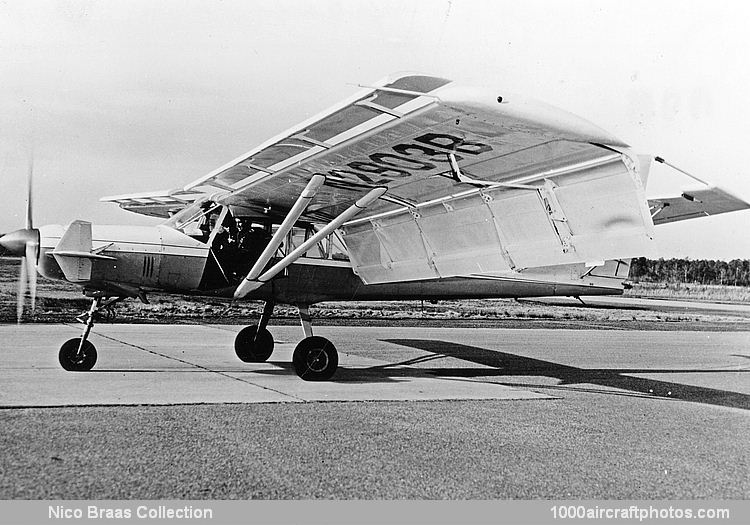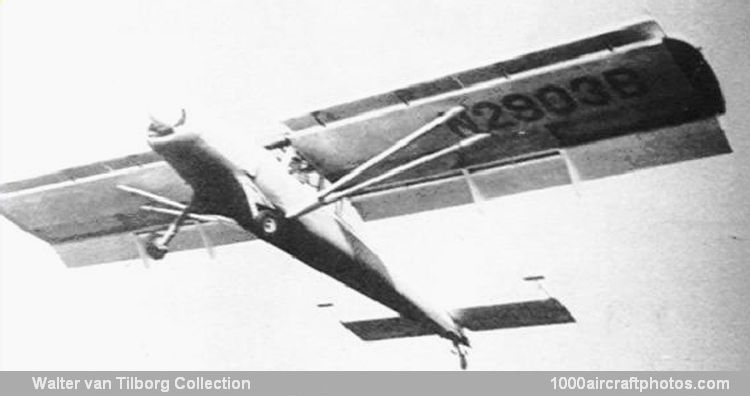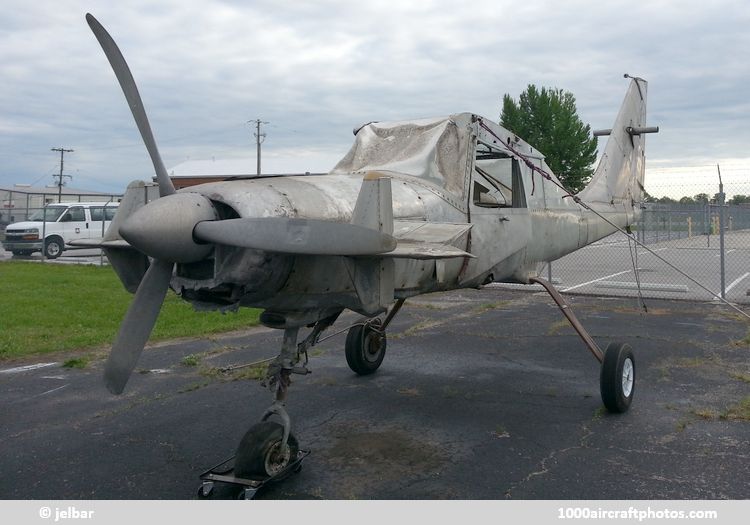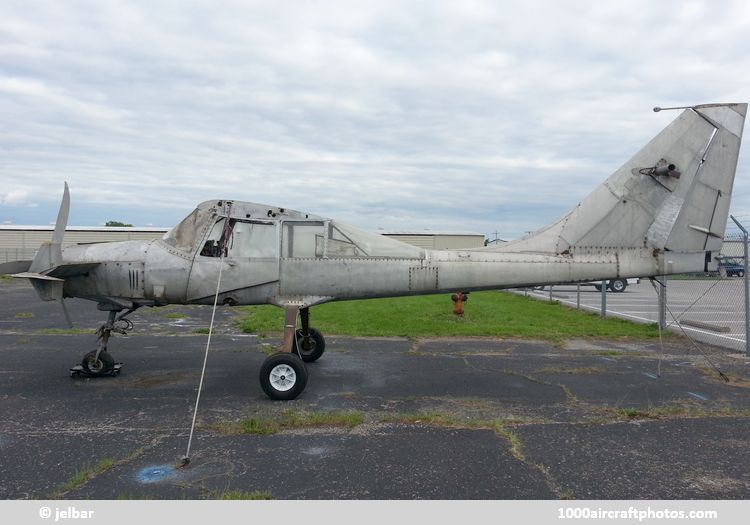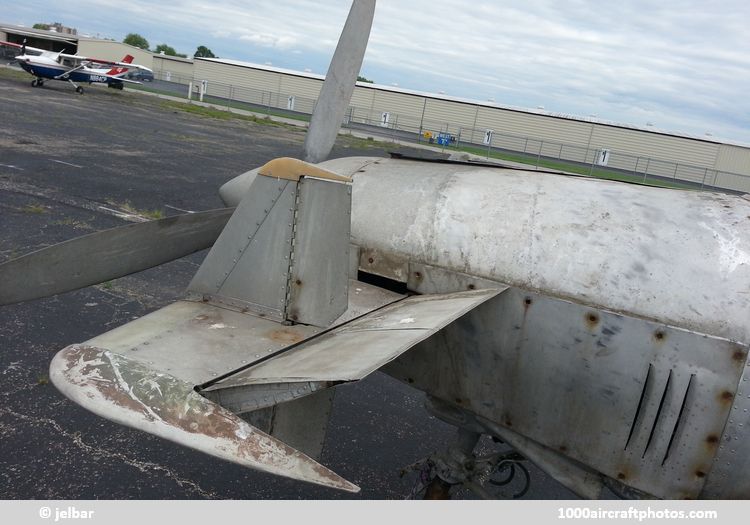04/30/2019. Remarks by
Johan Visschedijk: "James L. Robertson formed the Robertson Development Corporation at St. Charles Airport, 20 mls (32 km) north of St. Louis, Missouri, USA, to research, develop, design and manufacture aircraft capable of operating from small-sized landing areas less than 120 feet long and maintaining level flight at speeds of from 25 mph (40 kmh) to 165 mph (265 kmh).
Robinson SRX-1 Skylark (N2903B) (
Walter van Tilborg Memorial Collection)
The five-seat prototype Robinson SRX-1 Skylark, which flew for the first time on October 31, 1953, was of all-metal construction. The wings had full-span leading edge shrouds or slats, which not only prevented the wing from stalling at high angles of attack, but also served as aerodynamic balance for full-span double slotted Fowler-type flaps which extended over 40% of chord. Lateral control was by "spoilerons" on the upper surface. Turbulence-inducing surfaces were also used to supply positive ground control in high winds and to provide steep glide angles without increase of forward speed. It had an all-moving horizontal tail rotating about a lateral axis determined by its hinge line. Small surfaces, called "elevances," mounted ahead of tail provided aerodynamic balance for "stabilator" type elevators. It had a fixed landing gear with a steerable tail wheel. The power plant was a 260 hp Continental GE260-1 six-cylinder horizontally-opposed engine with spinner duct cooling.
Robertson moved to Fort Worth, Texas in 1960 and formed Skycraft Inc., where his SRX-1 Skylark was modified and renamed Skyshark. The Continental engine was replaced by a modified 420 hp Lycoming IO-720 eight-cylinder, horizontally-opposed, air-cooled engine with water injection. The all-moving horizontal tail was moved half-way up the fin, which had been modified from a trapezoidal to an arrow form. The landing gear was replaced by a tricycle gear.
Added to the flap-shroud combination on the SRX-1 was a new ULS (ultra-low speed) control system developed by Robertson. This consisted of auxiliary control surfaces (made up of a short-span foreplane, elevators, twin fins and rudders) mounted on the nose. Being immediately aft of the airscrew, the ULS control surfaces operated directly in the slipstream and provided a control precision at low speeds that was previously attainable only with a helicopter. They could also compensate fully for engine torque, even at zero forward airspeed.
Flight trials of the Skyshark, at Fort Eustis, Virginia, under a US Army Transportation Research Command contract, showed that the ULS control system increased control powers in all three planes by more than 250% at 40 mph (64 kmh), permitted a 50% reduction in safe minimum flying speed and reduced take off and landing runs by 50%. Control, stability, handling characteristics and performance at speeds above 40 mph were unaffected. However, despite these excellent performances, planned production did not materialize.
Subsequently the aircraft was fitted with a 340 hp Lycoming IGSO-480 six-cylinder, horizontally-opposed, air-cooled engine with fuel injection. The aircraft changed hands a few times. By August 1, 1990, it was registered to M and K Aviation of Jeffersonville, Indiana, by January 12, 1998, it was registered to Stebbins Aviation of Louisville, Kentuckey. Last owner is Mooney Hardwood LLC, also at Louisville, although the aircraft is in a very
deplorable state."
